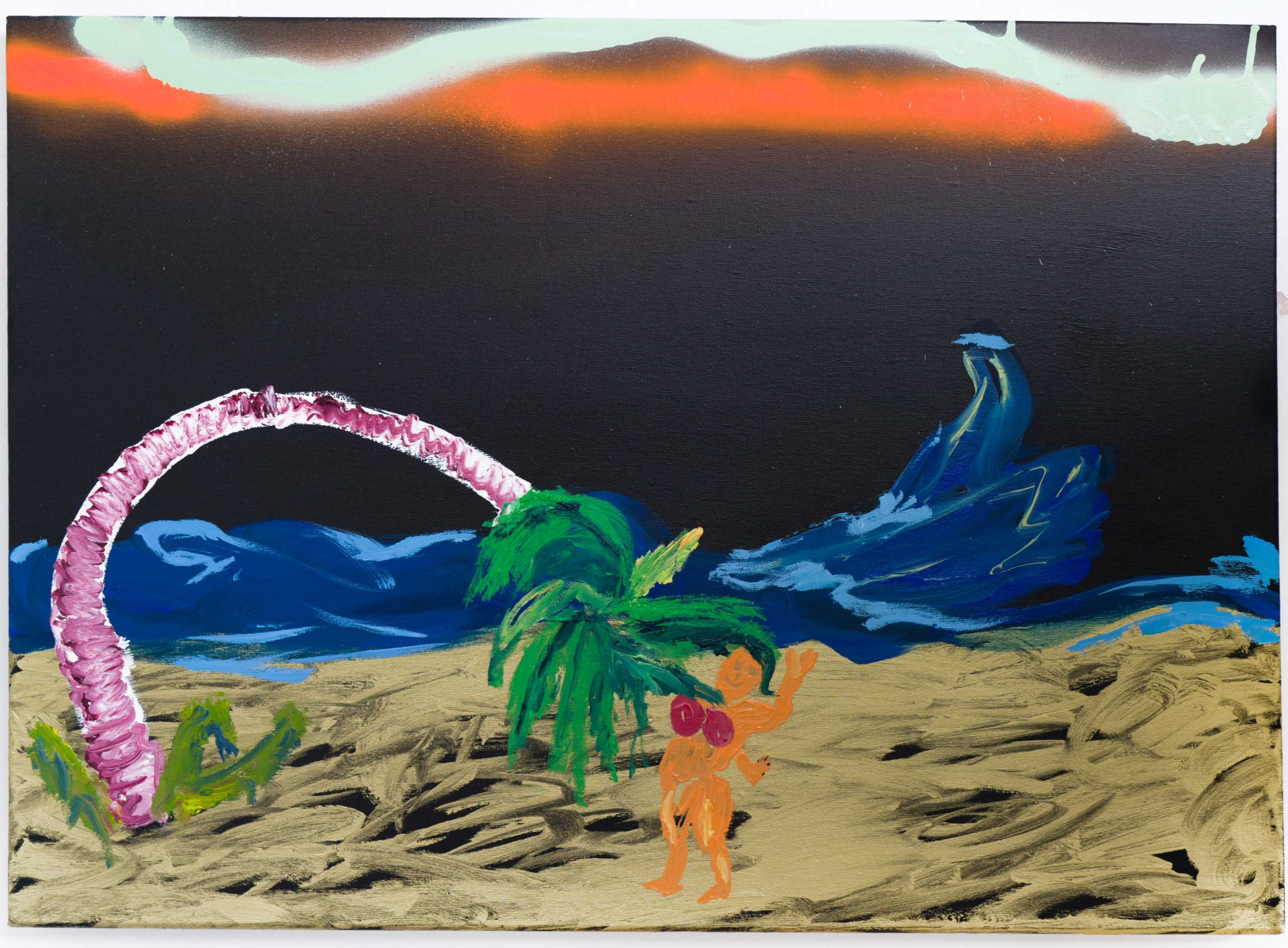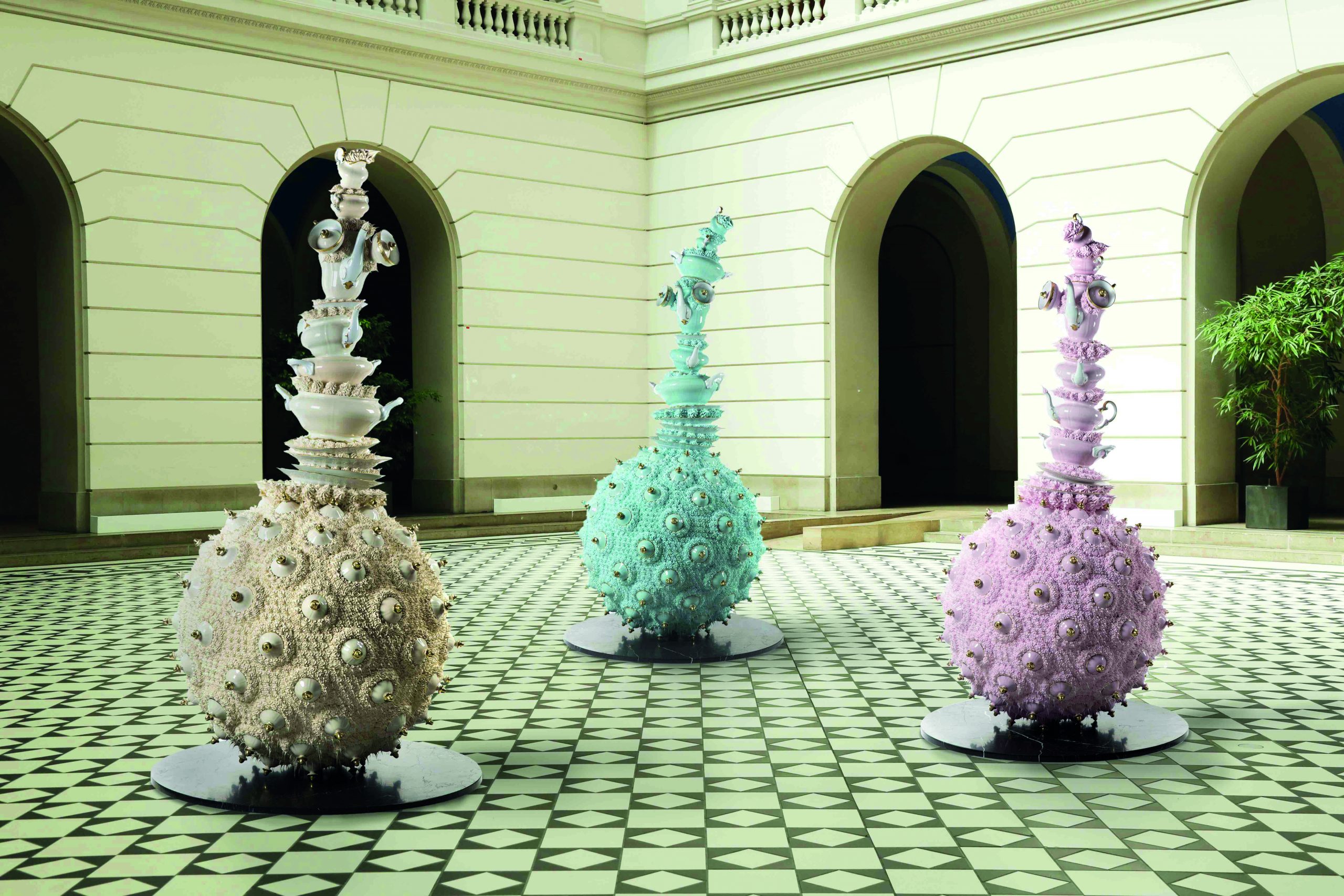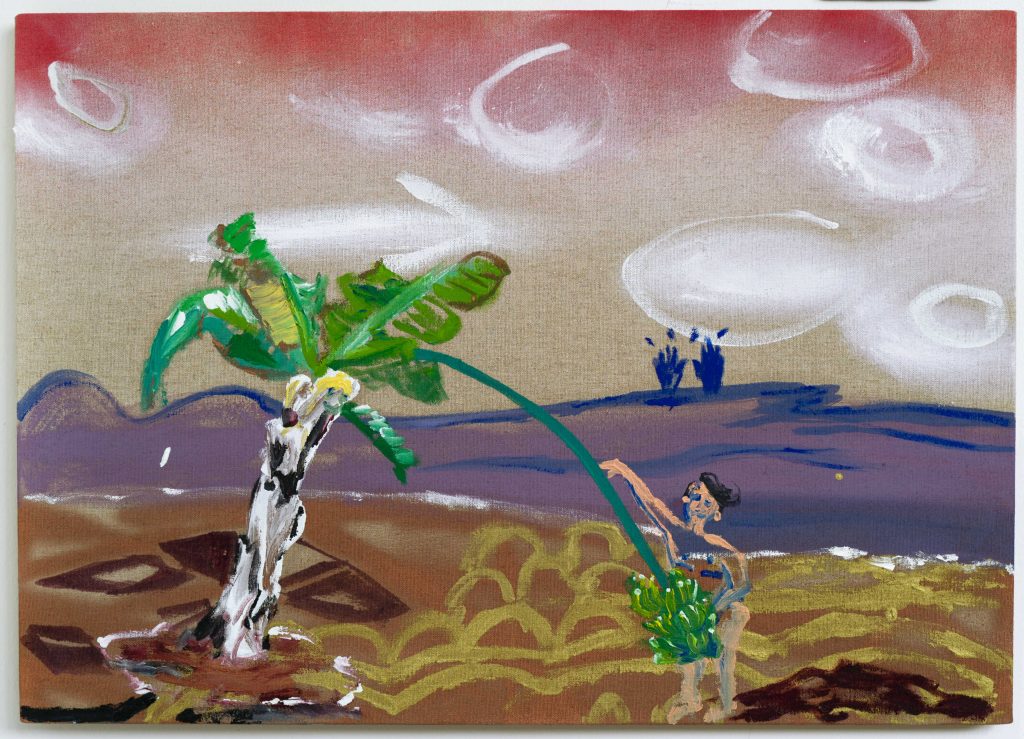
Artist Nilbar Güreş, whose show titled “The Sea Said Okay,” is currently on view at Galerist, says that this exhibit brings the summertime indoors. The world she creates here, in her words, is “a dynamic world that moves, talks, advises and stimulates”, and is as “ colorful and hyperactive” as her own. Regarding the pandemic, she writes: “For years, I have been dreaming of a period during which I could stay by myself and produce, with only my own thoughts and decisions, without being influenced by anyone. This exhibition has been the result of such a period.”
Güreş’s sculptures, which she produced during a lockdown period in the spring of 2020, will be exhibited in Switzerland and Vienna in April and May of 2021. In addition, the artist, who enjoys unique forms and an analogous craftsmanship with glimpses of the moment and chance, shares with us that there is a possibility that she will soon make work that will function digitally, for the first time.
-
We are experiencing a pandemic, a situation last seen almost a hundred years ago. The way it came out of the blue, how did this pandemic influence your inner world?
It really came out of nowhere, and I hope we have understood that what and who we consider global are actually our next door neighbors. As a next door neighbor myself; phones didn’t ring, e-mails didn’t pour in, and exhibitions got cancelled. Those people who wouldn’t wish you a get well soon if you called in sick; who wouldn’t listen or appreciate if you asked for a little time, all of us have been put on equal ground when faced with a health risk. It’s well known that the art world is a cruel system that doesn’t let you be sick or start a family; especially if you’re a woman. You can go offline at the slightest disruption. We live and work as we endure the most difficult of our menstrual cycles without saying a thing. This is sheer discrimination, really.
As part of my work, I’m a person who spends a bit too much time in the studio and indoor spaces. Even when I travel for a project or artistic residency, my process of integration within a space is very slow. In a new location for example, it takes a long time for me to go out on the streets. I’m not interested in casual social circles, cafes, bars and their audiences. For that matter, I didn’t need to integrate into being inside. The opposite is much harder for me. What I missed during this period was going to movies, concerts, exhibitions and just sitting there, hugging my loved ones.
Though I was shaken when I realized something, I have been working way too much! I have been incarcerating myself indoors. And so sometime soon, I hope to move into a new home in nature and be outdoors more often, in the garden, the forest, the sea.
We can see our weaknesses much more clearly
-
What would you like to share regarding the course (and aftermath) of this pandemic? Any resentments, hopes…
What a warm invite, thank you. I’ll say the negative ones first. When we were locked down at home, people I have worked with– gallery owners, curator friends– they didn’t really call to check up on me. Likewise, I was in Vienna recently when the terror attack happened. It happened in my neighborhood, at a place I pass through three orfour times a day. Again, not many people called and asked how I was, except for two. So few of them sent a message, emailed or called. It’s honestly upsetting to experience the fact that the art and business world, is so devoid of human emotion and empathy. On the flip side, this experience enabled us to know them in the real sense, as humans. They will be sifted out of our lives.
Being home alone brought with it a sort of indispensable individualization. But, setting apart the negative sides which are mostly a direct reflection of selfishness, being an individual has many great aspects. For example, now we do many things on our own, without help from others. This will change us, by supporting a type of liberation and the ability to be more mobile on our own. Perhaps we will be less of a burden to others, by doing our own work or hearing our inner voice more clearly. Either our confidence has improved or we have seen our weaknesses more clearly when left alone. Turkey is a society of communal habits. Perhaps this process will bring us into balance, drawing some of the too-detached Western societies together while bringing us some distance.
Or let’s forget about all these. These are all things about tomorrow, and they are possibilities. For me what it all comes down to is to learn how to live today, in this moment, and not to postpone what we want.
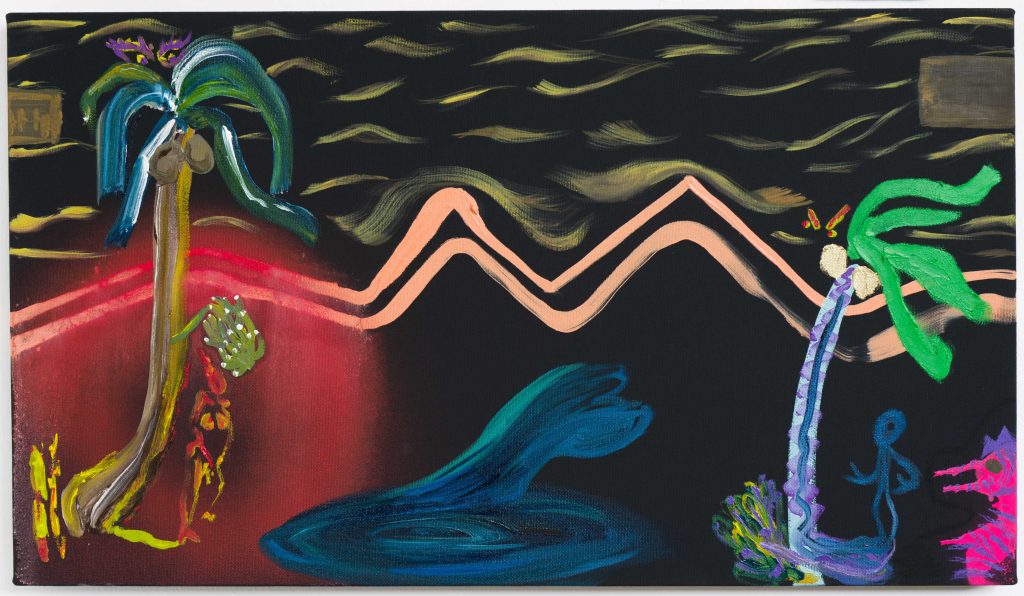
-
This is from the press release of your exhibition: “The Sea Said Okay” conceives a queer image while exploring ways to represent the experience of a world for these images.” It points to the blurring of borders against established hierarchies between sexes and different species. I’m interested in the production process and background your exhibited works.
In this exhibition there are plenty of generous bodies, palm trees, figures and gestures recalling precolonial perceptions of the body and other lifeforms. Someone who follows my work would easily grasp how this new exhibit connects with my previous outputs. Class inequalities and the hierarchies between the sexes are issues I have been bringing out for the last ten years in various forms. In this exhibition I only hope that I’m able to present images reflected through a wider lens. I also elaborate on what other aspects these issues include.
-
Your work presented in this exhibition came to life during the pandemic. How do you think this is reflected in your output? Are there any visible differences?
For years, I’ve been dreaming of a period during which I could stay by myself and produce, with only my own thoughts and decisions, without being influenced by anyone. This exhibition is the result of such a period. The difference I noticed is the change in my concentration. The current density of my focus is very clear and special. I’ll do my best not to lose it afterwards.
My First Oil Painting
-
The exhibition also showcases your oil paintings. Have you missed working with this medium? How do you think oil interacts with the issues that concern you?
I haven’t done oil painting professionally before. While I was studying, I worked with oil paints and acrylics for three years. But I was always more eager to work with acrylics because the oil didn’t dry out for ages. Now there are newer, contemporary materials that dry without matting. Seeing this, I immediately wanted to try out my ideas with oils. The works you see here are actually my first oil paintings, and they are all done in sessions. I did not repeat any of them, which makes them a little performative for me. Whatever the moment brings; there are no calculations, no second tries.
The Right To Live
-
There are themes we often encounter in your work: those of gender, women’s identity and role in society, LGBTI+ rights, historic and cultural definitions of the body in the context of sexual identities, as well as dominance and masculinity. . As in “The Sea Said Okay,” hierarchies between social classes, sexes and different species are among the issues that you critically engage. How did the pandemic influence your treatment of these issues?
I guess we are trying to survive in an environment where our physical strength is constantly questioned, no matter the job or the context. We are in an environment established by relatively healthy and genetically strong people, even though this criteria is very ambiguous and problematic. This is a type of established and imposed normativity. Being unhealthy or having a health problem is then a kind of anomaly. This is what is held up as normal, if the system and its exploitations are to endure in a controlled way and pace. Yet it is perfectly natural to be unhealthy or low-performance. Also natural is the desire to live on, whether you’re healthy or not.
This applies to animals, humans and all living creatures.
Everyone’s right to live should be available in the form they desire. If the heterosexual is natural, then being queer is natural too. As you can see, it’s very easy to view them together. In this exhibition, all of these are in my agenda.
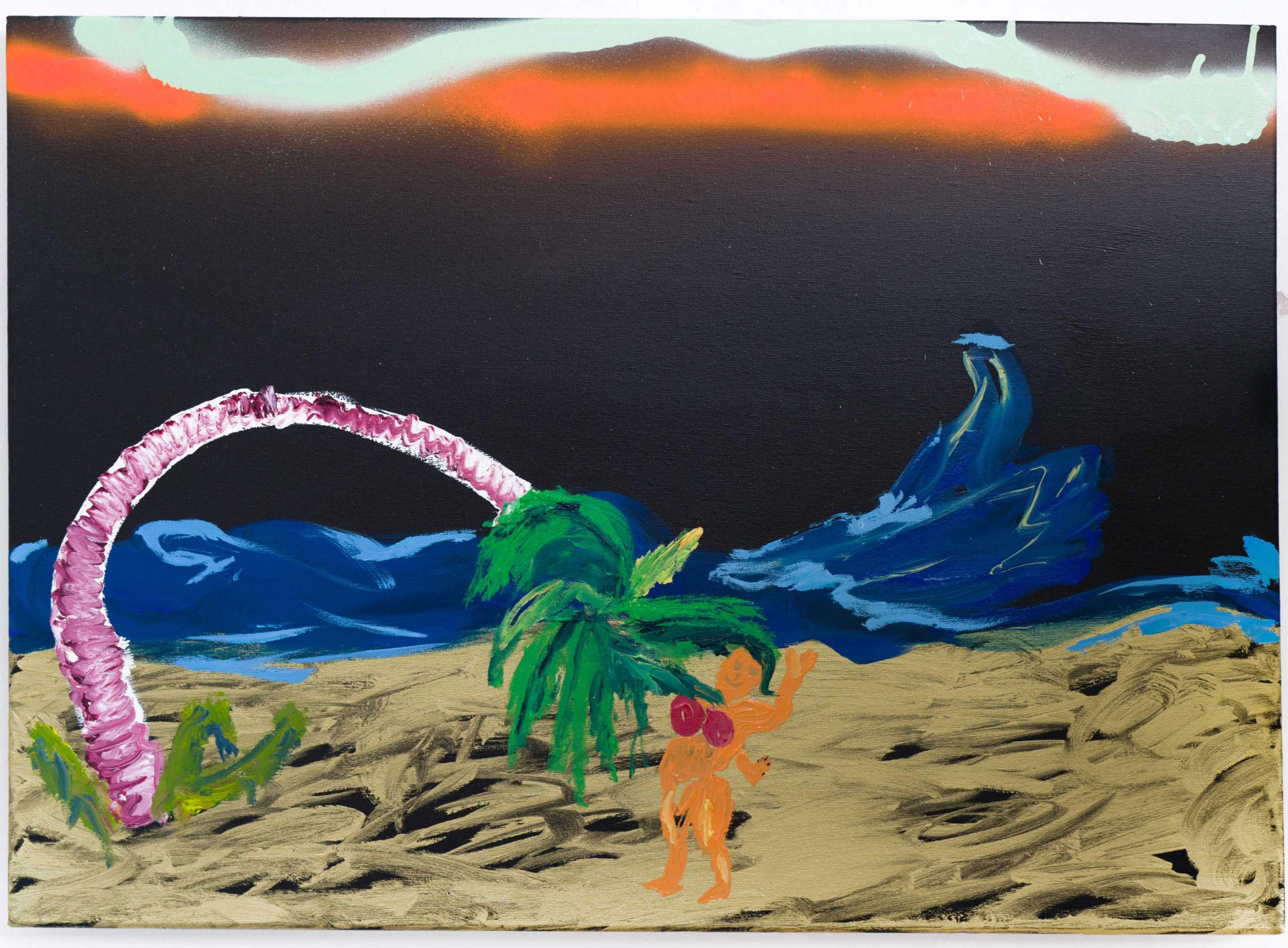
Will This Lead To Empathy?
-
Post-pandemic, we will witness transformations and new trends in the art world. This current condition of staying out of closed spaces, for instance, has brought attention to public art. Do you anticipate an increased variety of spaces for exhibitions in the near future?
Modes of presentation and communication may also change. Artists can now open exhibitions in their own venues and create narrower gatherings, more intimate and even private settings. Perhaps now, smaller and other types of spaces can flourish, not just one big, strong space.
And in the post-pandemic stage, everyone will react to it on their own. Nothing is at least physically post-pandemic yet, because still many of us could still die.
Digital Platforms Are Soulless
-
Fairs have been replaced by online viewing rooms and digital platforms for the purposes of art sales and trading. In this sense, how will the means for artists to reach their audiences and their collectors change? Or will they change at all?
Frankly, I made two videos and sent them to the SAHA members who supported me for my participation in different events, because their planned studio visit was canceled. So I shot and shared videos. Apart from that, I guess I am not very fond of digital platforms in terms of exhibiting; I find it soulless. It can be a tool for galleries, but it cannot convey the feeling of a space. This is just like theatre plays or concerts, which should ideally be watched live. We cannot deny that exhibition spaces are stages and that they are crucial. There are also other elements at work, such as history, reaction, movements and curation.
The Digital World Irritates Me
-
The increasing popularity of digital art may also influence medium preferences for artists. Some time ago we witnessed many people turning to video, but then it stabilized over time. Do you expect a similar trajectory for digital art?
I guess I’m the wrong person to ask, because it’s not a medium I have a comprehensive grasp of.
The videos you give in your question are an exemplary case, and may as well be analogue works that have been digitized. The digital world irritates me, and I skip digital works in exhibitions. In my personal practice, the presence of digital things are limited; rather there are things that are digitized. My photos should be in .TIF format to be printable, and videos should often be in .MOV format to be able to be shown. That is all. The aesthetics of the computer world are generally very raw and non-dimensional for me. Perhaps what pushes me away from them is that they work with ready-made forms, being odorless and tasteless. I like unique forms, analogue craftsmanship that contains and reflects the moment and is open for chance encounters. Because in analogue work, the control of time and movement is difficult. Repetition is impossible. Digital, on the other hand, is always open to reconstruction, it’s a bit like an “as if”… There is also meaning in this, of course, but it is not for me.
Although, interestingly, there is a possibility of doing a work that will function digitally for the first time very soon. Because otherwise I have no chance to access a space. But again, the work will be in analogue.
This Exhibition Embalms Summertime
-
In a previous interview you said: “Time is not a concept for me, it is a feeling I pass through.” One thing that is by far most influenced by this pandemic is our sense of time. How can one interpret time in your recent exhibition? How is time reflected there?
I am not a philosopher and I quickly forget what I have read. Almost everything I say is based solely on my personal, and at times naive, ideas. I recently started reading a book for a biennial, the book of a philosopher who is claiming the same thing as I am. He says the same thing, incidentally… The sense of time is something related to perception. Some days are too long, some are too short, they are a link-less chain that depends on how you live.
I always get cold. I like summer months the most; the feeling of time running through my exhibition is the summer, and it merely embalms summertime within the space. There are naked and free bodies hovering under a hot sun. Sometimes the wind blows, the grass sways, the ground is sand or earth. To me, it warms us up. According to a visitor, it elevates us. We had a very difficult spring and summer. My summer, though it’s a shame to say, has been good for the first time, because I took a vacation for the first time in perhaps 19 or20 years. But it was not enough, so I guess I somehow extended that time, this summer, for all of us with this exhibition.
Now I Want To Read More, Think More
-
You care about the feelings that your work evokes for the viewer. What would you like to say about the visual world of “The Sea Said Okay”?
There is a dynamic world in this exhibition; a talking, moving, advising, and stimulating realm. This is my world of course; colorful and hyperactive, so am I. But frankly, I do not stay long under the influence of my own creations. If I do so, I cannot create new things. I cannot commit to new worlds. I always keep asking, ‘what was this other thing I always wanted to do?’
The Art Market Is Unfair
-
You state in a previous interview that the art market in Istanbul is unfair, underlining that the relationships between artists, collectors, gallery owners, institutions and managers are an obstacle against a fair environment. How do you think this pandemic will affect the art market and its structures in Turkey?
I have very rebellious ideas of my own that sound very naive at times. Some artists work in institutions. They become assistants, moderate conversations. Then, the same artists establish relationships and make exhibitions with the support of these institutions. All this is not ethical. Every year, many international curators come to Istanbul and meet with artists. As their time is limited, they only visit certain institutions and meet with people recommended by those institutions. I think this network that operates through acquaintanceships will get even worse with the pandemic. I mean, think of it this way; I live in this city, I have a studio here, a life here. But in all these years, only one curator has approached me from any of those institutions, and that was in the last month.
Until last year, I would immediately introduce my artist friends to someone I worked with and trusted. And when I saw that nobody approached me in the same way, I stopped doing so. Constantly making unilateral efforts is very consuming.
Artists Live With Anxieties
-
The times that you live in are the highlights of your personal story as well; your being in multicultural environments, with people who do not speak your language. You are based in Istanbul and Vienna, probably spending lots of time abroad as an artist, and this must have been disrupted this year. How does settling in one place and being spatially restricted reflect on your mind and your work?
I was not restricted at all. On the contrary, it felt very good, and suddenly this exhibition that I am very pleased with came out. Because flying and working so much brings many health problems, I have chronic aches and cannot take care of myself at this abnormal pace. My body is forming oedema from flights, stomach aches, and hormone imbalances disrupted by excessive time shifts, and many other things! Being slow and traveling less has definitely been healing.
But financially, it’s not the same. Employees of institutions are people with salaries, artists do not have such benefits. During the pandemic, everyone got their salaries, but we were desperate as artists. In fact as artists, not only because of the pandemic right now, but in general, we live with great insecurities and anxieties for the future. My suggestion is that anyone who owns an institution should be leading that organization to establish close relationships with artists and help them ease this feeling of insecurity. Artists need constant support, and mostly from their colleagues!
Galerist made a nice move during this process and created a sales list without taking a gallery percentage. Unfortunately, the art collectors failed us and didn’t buy anything. So sad!
-
Is there a work of art that you have been very impressed with recently, from any field?
Only in music: Scott Walker’s album Bisch Bosch.





